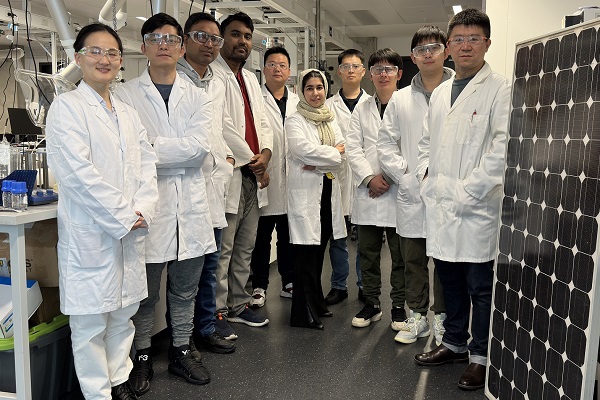UNSW develops highly effective PV recycling
UNSW Sydney engineers have developed a more effective way of recycling solar panels with its ProMO lab team announcing a process that offers an effective separation of 99% of PV cell particles.
With PV panels normally lasting around 20 to 25 years, and Australia’s growth in solar beginning in the 1990s, ProMO lab leader professor Yansong Shen says there is a “pressing and urgent problem to deal with” for first-generational panels nearing the end of their life expectancy.
ADVERTISEMENT
“We want to reuse and recycle those panels, but now there is very limited research and very limited technology to allow us to do so effectively and prevent them from just ending up in landfill.
“Putting solar panels into landfill is a big issue because there are a number of harmful metals in the panels that can pollute the soil and pollute the water. So for environmental reasons we also need to find a better way to recycle the panels.”
To be reused, solar panel components need to be carefully separated to avoid contamination with other materials. Manufacturers will only reuse materials that have a high purity which has proven very hard to achieve, meaning many solar panels could end up in landfill, rather than being recycled for the benefit of the environment.
Funded by federal ARENA and NSW EPA grant, the ProMO lab team has been working for close to three years on developing their processes which integrate conventional methods with a very highly abrasive separation system using the addition of sieving aids.
The first, current step to recycle PV panels has involved the removal of large components such as the aluminium frame and glass sheets to just leave the solar cell. Yansong says the next step will be “crushing the panel and separation of material inside the solar cell”, this being one of the “key bottlenecks for the whole system”.
“If we do not have a simple method for high-abrasion separation, then we can’t effectively move on to the third step, which is recovering the various material that has been separated and being able to reuse them.
“The key to our new process is the addition of the sieving aids which help to crush the solar cells into smaller particles, allowing a better separation of all the components. That makes it much easier to recover important elements such as the silver contained in the solar cells.”
According to estimates from the International Renewable Energy Agency, the cumulative PV waste volume on a global scale will reach up to eight million tonnes by 2030. And that figure soars to potentially up to 78 million tonnes of waste by 2050 as successive generations of solar panels installed at the start of the century come to their end-of-life.
The ProMO research team at UNSW calculate that between 5-50 million kilograms of silver could potentially be recycled from the cumulative waste by 2050 using their process, given that the equivalent of around 0.64kg of silver per tonne of PV waste has been recovered in tests.
-
ADVERTISEMENT
-
ADVERTISEMENT


